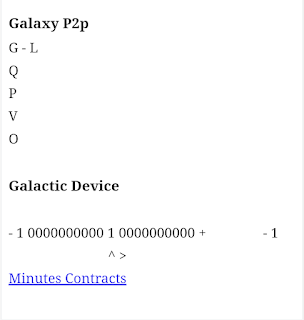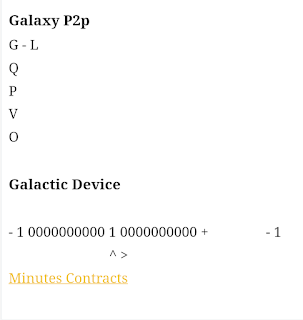Electrons, protons, and neutrons are fundamental particles that make up atoms:
e × p1836 × n =
Electron : A negatively charged particle found in the electron cloud surrounding the nucleus. It has a very small mass compared to protons and neutrons.
Proton : A positively charged particle located in the nucleus of an atom. It has a mass approximately 1836 times that of an electron and determines the atomic number of an element.
Neutron : A neutral particle, also found in the nucleus, with a mass similar to that of a proton. Neutrons contribute to the atomic mass and stability of the nucleus.
Together, protons and neutrons form the atomic nucleus, while electrons are responsible for chemical bonding and reactions.
A neutron is a subatomic particle found in the nucleus of an atom. Here are some characteristics:
The neutron bomb works by utilizing a nuclear reaction, primarily fusion, to produce a large number of neutrons. Here’s a simplified breakdown of how it functions:
Nuclear Reaction : When detonated, the bomb initiates a nuclear fission reaction, which produces heat and pressure. This also triggers fusion reactions, typically involving isotopes like deuterium or tritium.
Neutron Generation : The fusion process releases a significant amount of high-energy neutrons. Unlike conventional nuclear weapons that focus on explosive force, the neutron bomb is designed to enhance neutron output.
Radiation Effects : The neutrons released are highly penetrating and can travel through materials and structures. They can cause severe damage to biological tissues and electronic systems while having a limited impact on buildings.
Minimal Blast Damage : While there is some explosive force, the design minimizes this to reduce physical destruction, allowing for more controlled targeting of enemy personnel.
The bomb's emphasis on radiation effects over explosive damage makes it unique among nuclear weapons, leading to discussions about its strategic implications and ethical considerations.
Charge : Neutrons are electrically neutral, meaning they have no charge.
Mass : They have a mass slightly greater than that of protons, about 1.675 x 10^-27 kg.
Role in Atoms : Neutrons, along with protons, make up the atomic nucleus. The number of neutrons in an atom can vary, leading to different isotopes of an element.
Stability : Free neutrons (not bound in a nucleus) are unstable and decay into a proton, electron, and antineutrino with a half-life of about 14 minutes.
Interactions : Neutrons play a crucial role in nuclear reactions, such as fission and fusion, and are important in maintaining the stability of atomic nuclei.
Overall, neutrons are fundamental to understanding atomic structure and nuclear physics.
A neutron gun is a hypothetical weapon that would emit a beam of neutrons, potentially used in military or scientific applications.
Neutrons are neutral particles found in atomic nuclei and can penetrate materials without causing ionization like charged particles do, making them potentially effective for certain types of non-destructive testing or specialized applications.
However, the concept is largely theoretical, as creating a practical and safe neutron beam weapon presents significant technical and ethical challenges.
Neutrons are neutral particles, which means they do not carry a charge and, therefore, do not cause ionization directly when they interact with matter. This contrasts with charged particles, such as electrons or alpha particles, which can knock electrons off atoms, leading to ionization.
In terms of practical applications, the non-ionizing nature of neutrons allows them to penetrate materials more deeply without damaging them through ionization. This property makes neutrons useful in non-destructive testing, where their ability to interact with nuclei can reveal structural integrity without altering the material.
However, when neutrons do interact with matter, they can cause nuclear reactions or secondary radiation (such as gamma rays), which can pose safety concerns. This makes the development of a neutron gun complex, as ensuring safety while harnessing these interactions presents significant technical challenges.
Atoms
Molecules
Isotopes
Isotopes are variants of a particular chemical element that have the same number of protons but different numbers of neutrons. Here are some points:
Same Element : Isotopes belong to the same element and share the same atomic number (number of protons) but differ in mass due to the varying number of neutrons.
Stability : Some isotopes are stable, while others are radioactive and decay over time. Radioactive isotopes can emit radiation as they transform into other elements.
Notation : Isotopes are often represented by the element's symbol followed by the mass number (total number of protons and neutrons). For example, carbon-12 (¹²C) has 6 protons and 6 neutrons, while carbon-14 (¹⁴C) has 6 protons and 8 neutrons.
Applications : Isotopes have various applications, including:
- Radiocarbon Dating : Using carbon-14 to date organic materials.
- Medical Imaging : Certain radioactive isotopes are used in diagnostics and treatment.
- Nuclear Energy : Isotopes like uranium-235 are used as fuel in nuclear reactors.
Natural vs. Artificial : Some isotopes occur naturally (e.g., carbon-12 and carbon-14), while others can be artificially created in laboratories.
Isotopes play a crucial role in chemistry, physics, biology, and environmental science.
Deuterium and tritium are isotopes of hydrogen, and they differ in the number of neutrons in their nuclei:
Deuterium (²H or D) :
- Composition : Has one proton and one neutron.
- Natural Occurrence : Found in trace amounts in natural hydrogen, making up about 0.0156% of all hydrogen.
Tritium (³H or T) :
- Composition : Has one proton and two neutrons.
- Natural Occurrence : Very rare in nature; it is mostly produced artificially in nuclear reactors or as a byproduct of cosmic ray interactions.
Sources and Production:
- Deuterium : Can be extracted from water, as seawater contains about 1 part in 5,000. It can also be produced through nuclear reactions.
- Tritium : Generally produced in nuclear reactors by bombarding lithium-6 with neutrons or through nuclear fusion processes.
Both isotopes are important in various applications, such as nuclear fusion research and in some types of nuclear reactors.
To create a schematic for reactors using lithium-6, you can visualize two main processes: neutron bombardment and nuclear fusion.
Neutron Bombardment of Lithium-6
- Reactor Core : Contains lithium-6.
- Neutron Source : Generates neutrons directed at lithium-6.
- Reaction :
- \( ^6Li + n \rightarrow ^4He + ^3H + \text{Energy} \)
- Energy Extraction : Heat from the reaction is used to produce steam, driving turbines.
Nuclear Fusion Process
- Fuel : Lithium-6 mixed with deuterium (heavy hydrogen).
- Fusion Chamber : High temperature and pressure conditions to facilitate fusion.
- Reaction :
- \( ^6Li + ^2H \rightarrow 2 ^4He + \text{Energy} \)
- Energy Capture : Heat produced is converted to electricity.
Schematic Overview
1. Neutron Source (for bombardment)
- Arrows indicating neutron flow to lithium-6.
2. Reactor Core (for fusion)
- Fusion chamber with containment walls.
3. Energy Conversion (steam turbines or direct electricity generation).
4. Cooling System : To manage heat produced in both processes.
This schematic outlines the basic components and processes involved in using lithium- in nuclear reactors.
Lithium-6 Reactor Schematic Animation
Neutron Bombardment of Lithium-6
Nuclear Fusion Process
Schematic Overview
- Neutron Source (for bombardment)
- Reactor Core (for fusion)
- Energy Conversion (steam turbines or direct electricity generation)
- Cooling System (to manage heat produced in both processes)
Composition of the Sun
Total Number of Electrons, Neutrons, and Protons
The Sun is primarily composed of hydrogen and helium, with the following mass distribution:
- Hydrogen (H): ~74% by mass
- Helium (He): ~24% by mass
- Other elements: ~2%
Total Mass of the Sun
Mass: Approximately 1.989 × 1030 kg
Mass of Elements
- Mass of Hydrogen: ~
1.47 × 1030 kg - Mass of Helium: ~
4.77 × 1029 kg
Number of Atoms
- Hydrogen Atoms: ~
8.80 × 1056 - Helium Atoms: ~
7.18 × 1055
Total Counts
- Total Protons: ~
1.024 × 1057 - Total Neutrons: ~
1.44 × 1056 - Total Electrons: ~
1.024 × 1057
Conclusion
This estimation highlights the vast number of fundamental particles present in the Sun, emphasizing its massive size and unique composition.







0 Comments